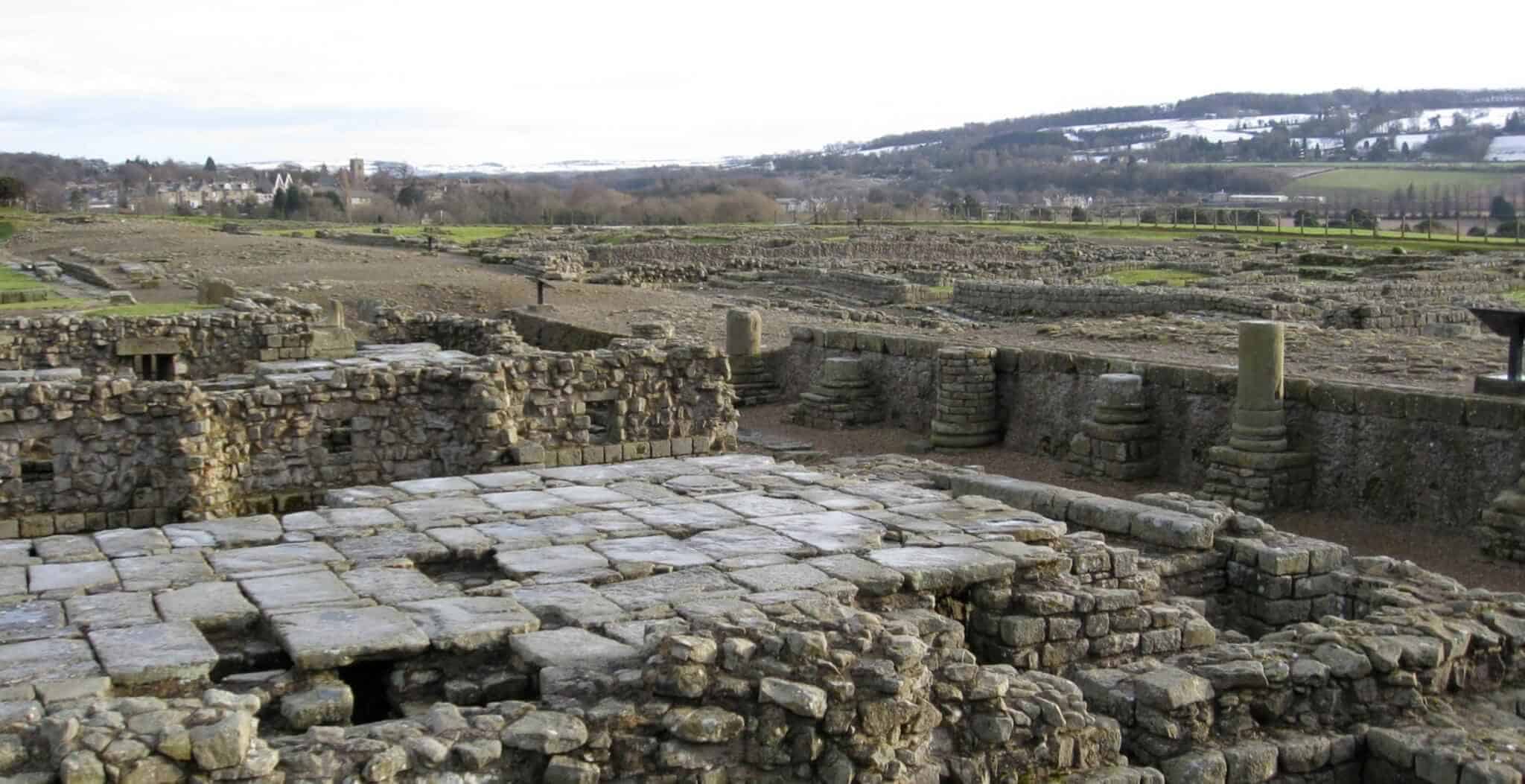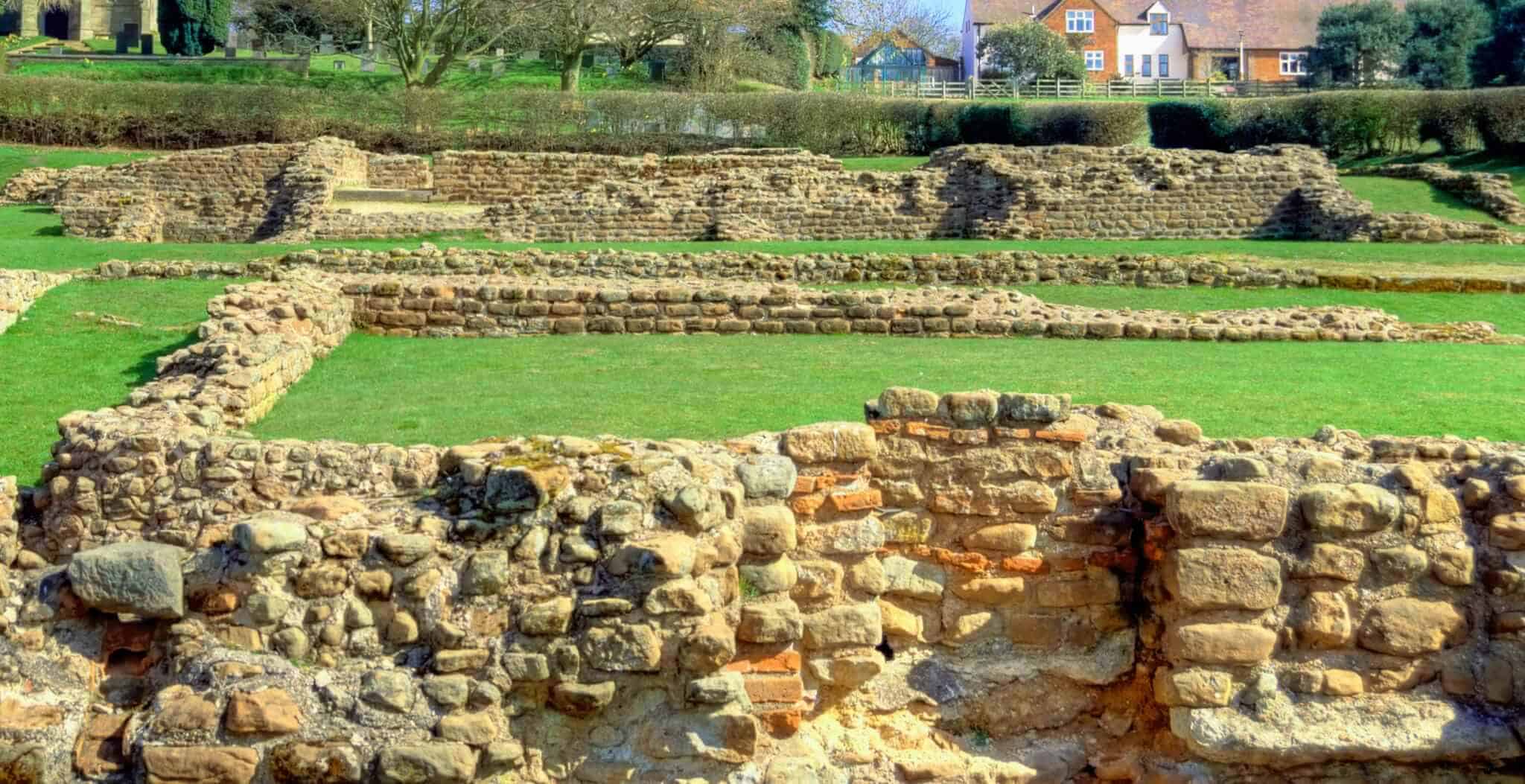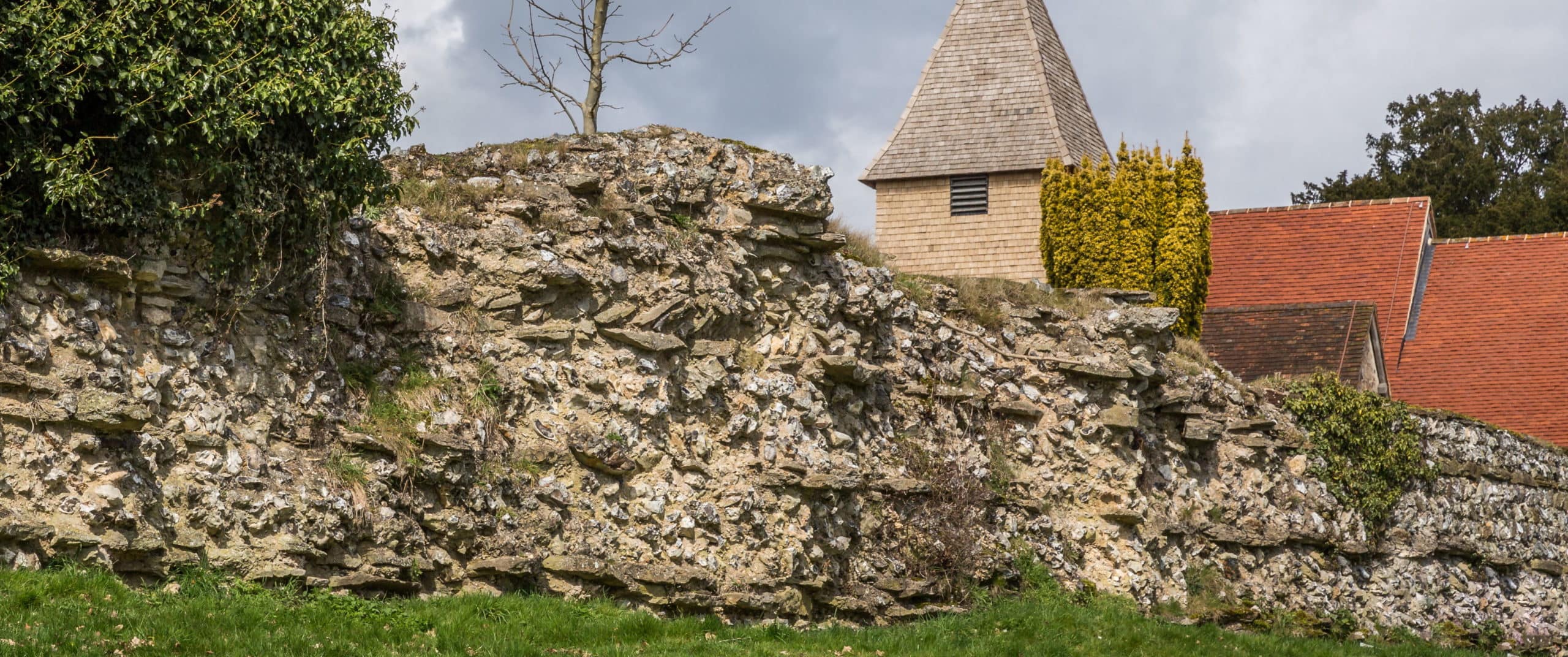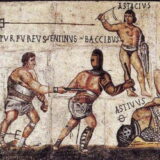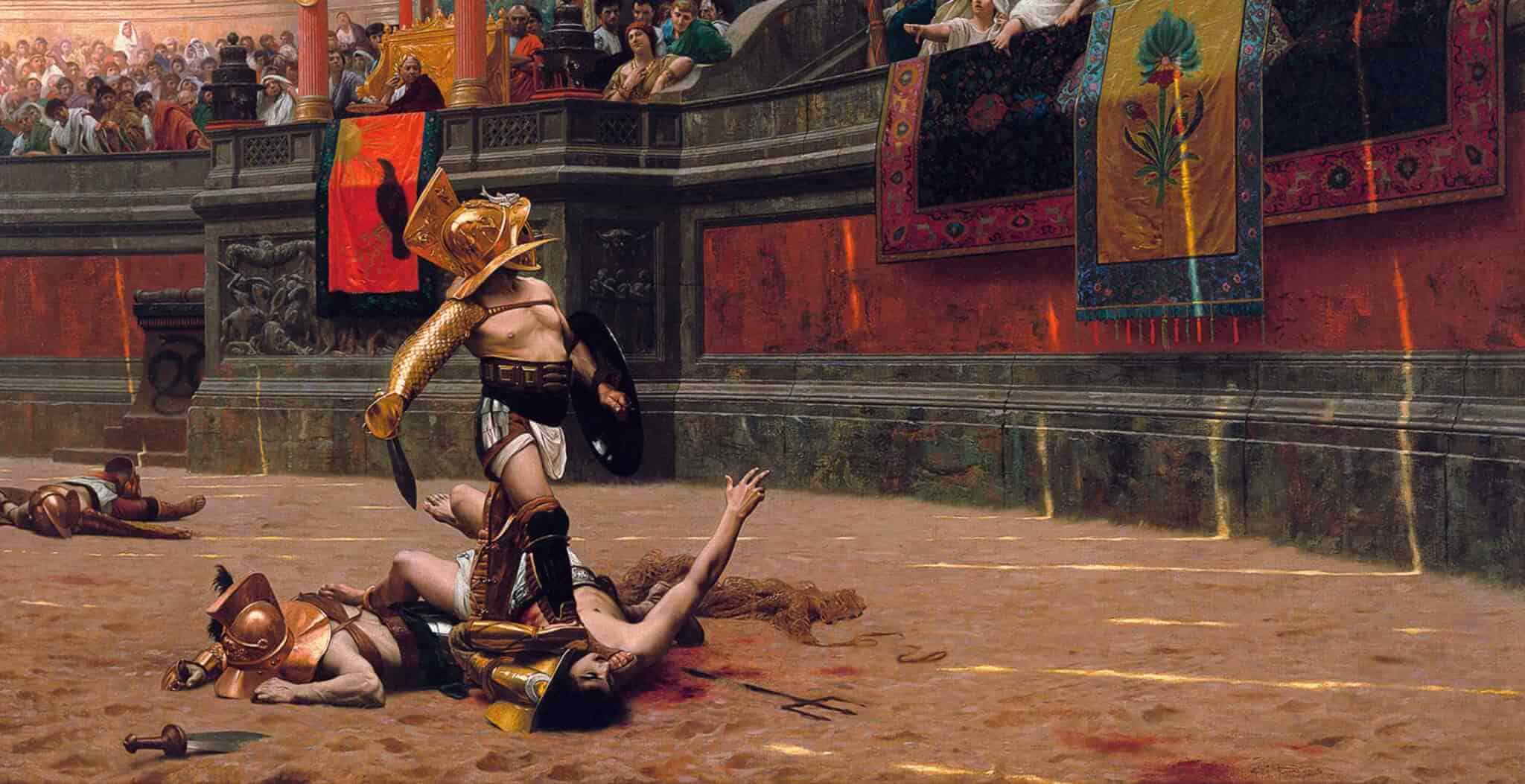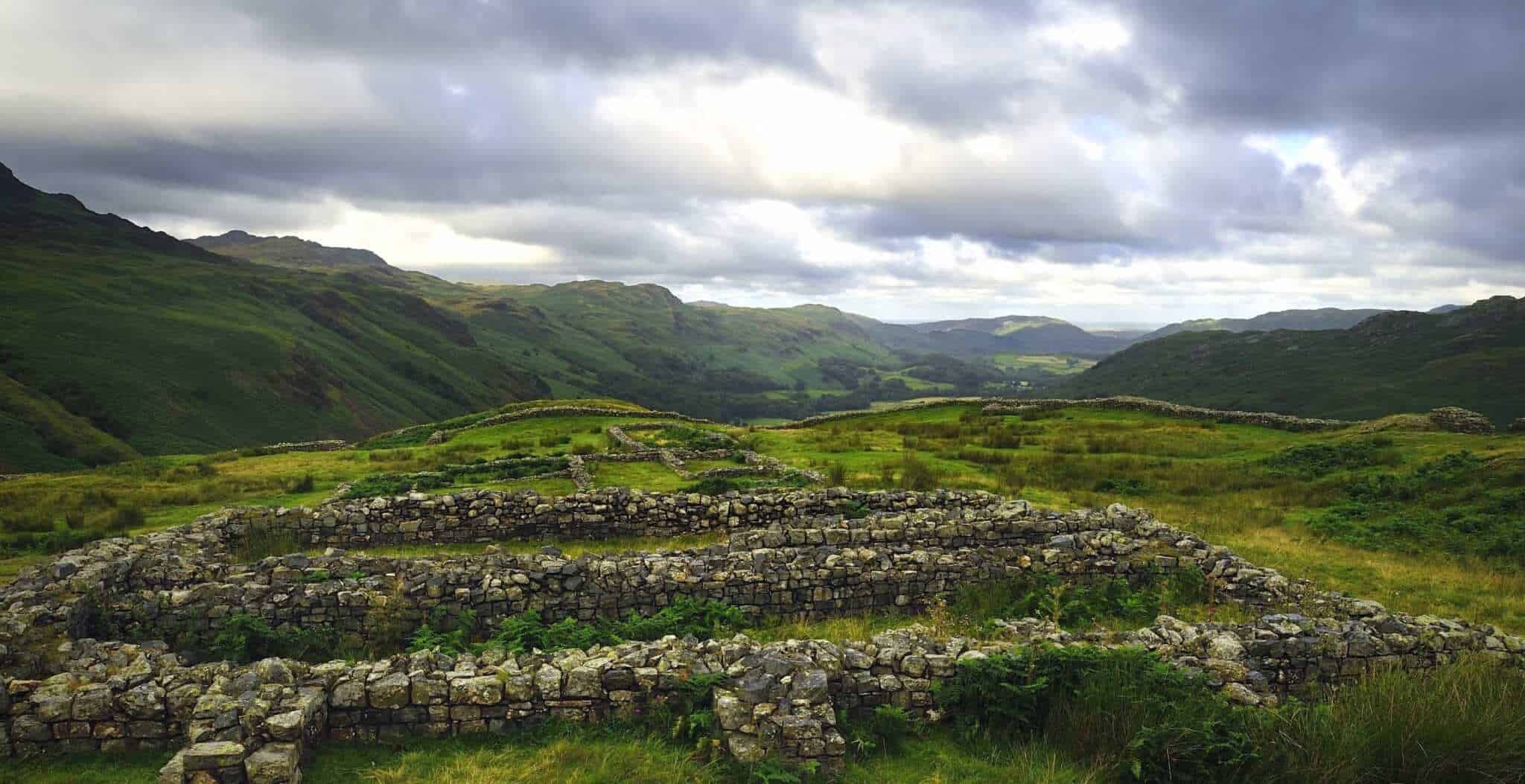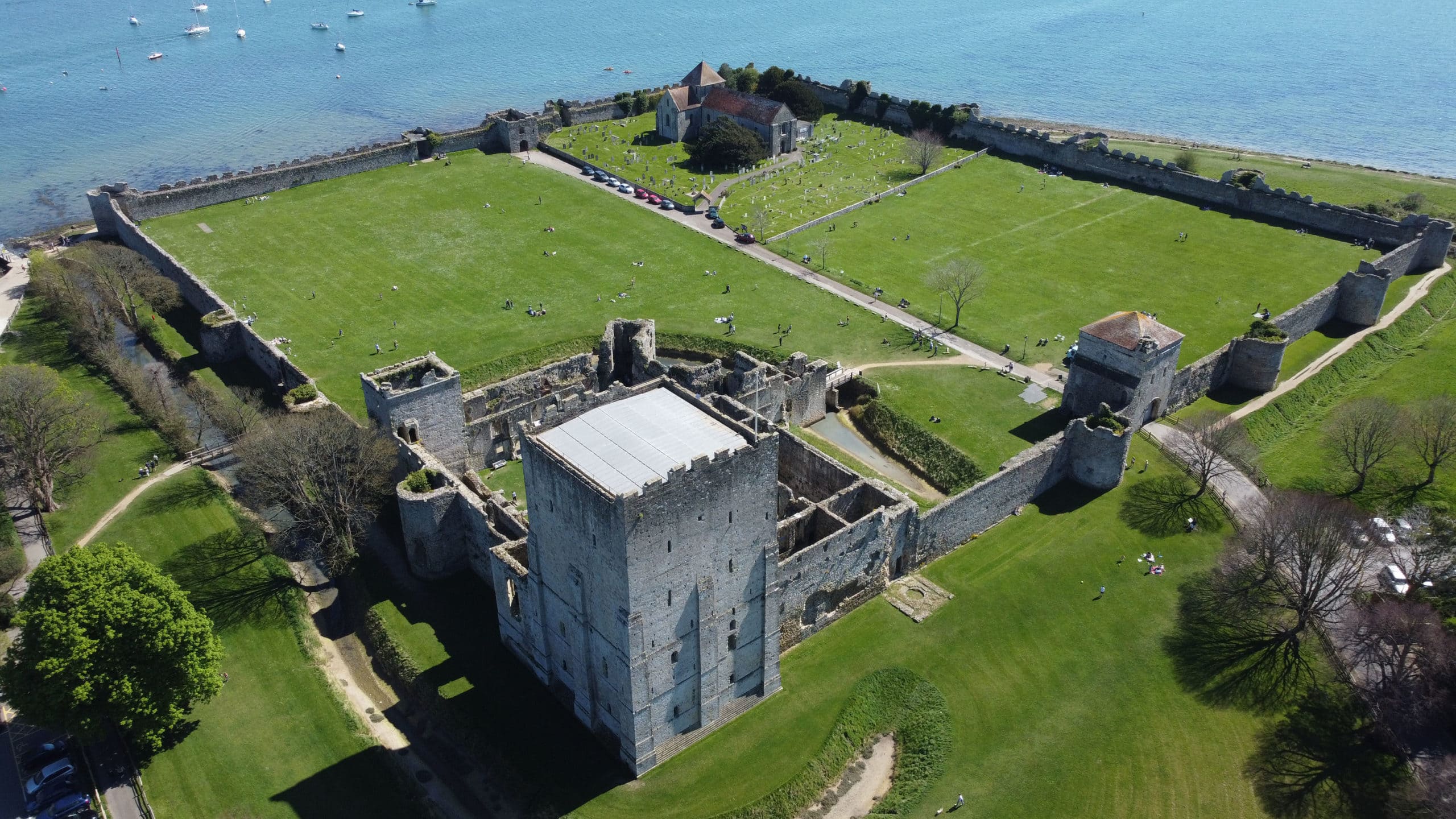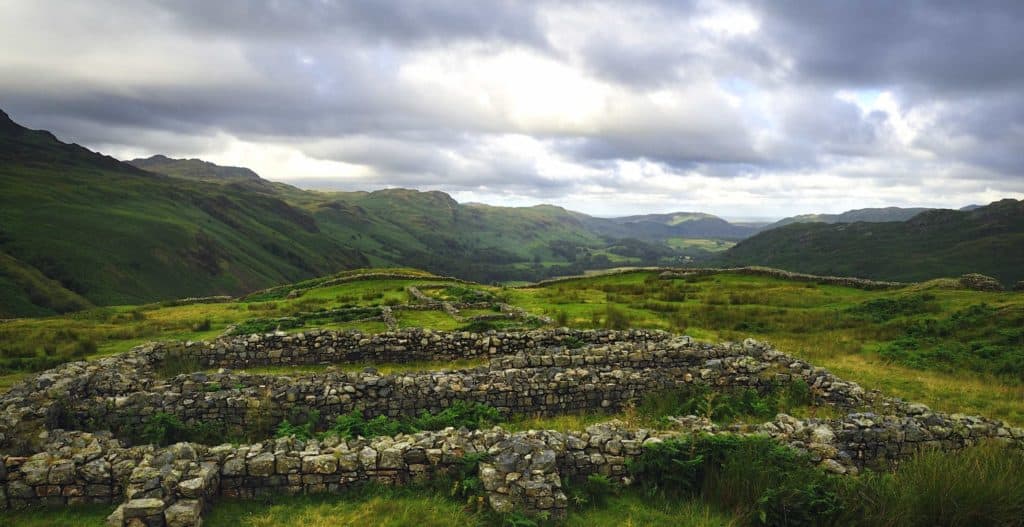In AD90, the site of Corbridge was chosen as a site for a major Roman fort designed to protect a bridge spanning the River Tyne. This early fort, complete with turf ramparts and timber buildings, was burnt down in AD105.
After the destruction of the fort, a new fort, still in turf and timber, was quickly built to replace it. It’s layout was altered considerably, and only the headquarters building occupied the same site as before.
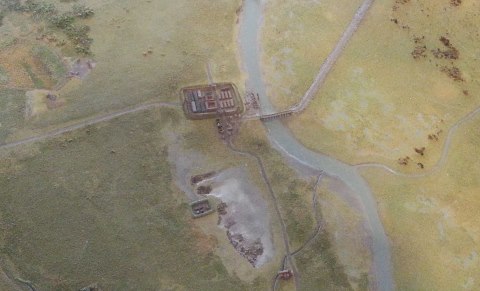
Above: Corbridge in around AD90. The supply base used for the campaigns in Scotland has by this point been abandoned, and the permanent auxiliary fort lies near the bridge across the River Tyne. A small civilian settlement is beginning to form around the southern flanks of the fort.
In AD121 the fort was rebuilt again to accommodate a different garrison, and now contained space for a unit of 1,000 infantry men. By AD125 the garrison had left Corbridge and probably moved to the newer forts on Hadrian’s Wall (situated two miles to the north).
From about AD125 until AD140, the fort at Corbridge lay vacant, whilst the forts on Hadrian’s Wall thrived with activity. When the Romans moved into Scotland again in AD140, Corbridge was reoccupied by a mixed garrison of cavalry and infanty. The new fort was the same size as its predecessors, although the main buildings were this time built in stone.
Further alterations to the internal layout followed in about AD155, with more buildings being replaced in stone. A fragmentary inscription, recording building in AD155 – 158, records the date of this change which was necessary to adapt the fort for a new troop unit withdrawn from Scotland at the time of its abandonment by the Roman army.
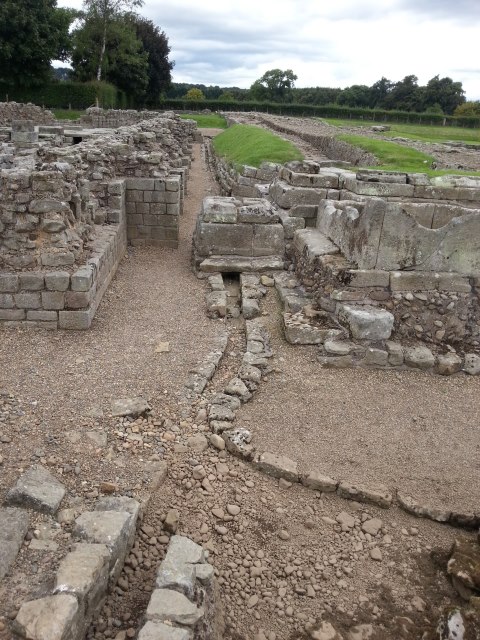
It was not until the reign of Septimius Severus (AD193 – 211) that the major buildings now visible on the site began to take their final form. Along the south side of the Stanegate (the central road leading through the heart of Corbridge), a pair of works compounds, barrack blocks and other accommodation was built for detachments of two legions, the sixth and the twentieth. From an early stage, both compounds were surrounded by separate walls and their entrances faced each other across a street leading south from the Stanegate. The enclosing walls run in a curiously irregular manner behind already existing buildings fronting on the south side of the Stanegate.
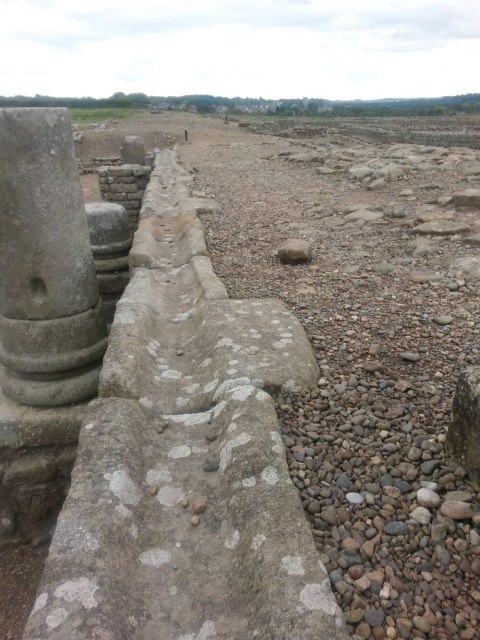
This phase marks the end of the change in character which had been going on at Corbridge since about AD163. The site was now a town, with military compounds forming part of its central core.
From about AD200 and for the next two centuries, Corbridge continued to thrive as a town with a military garrison in occupation. The military compounds continued in occupation through the whole of the third and fourth centuries AD, and many of the finds from the site belong to this period of use. Eventually the two compounds were united by a new wall and gate on the south side of the main street. They retained their character as an army camp within what was increasingly a civilian town.
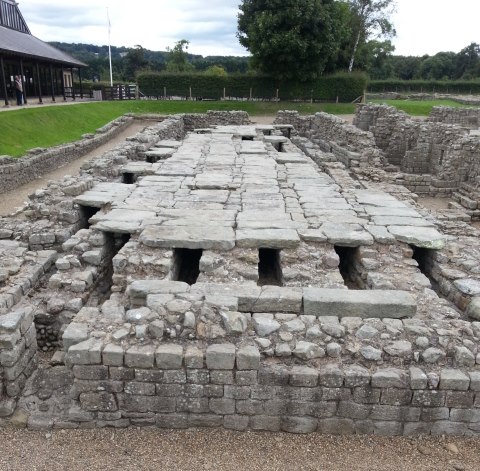
Corbridge continued to act as a civilian and military centre well into the 4th century AD, although there is limited information about the town during this time. It is also not known when the site was abandoned, although most historians suggest that this would have been around the same time as the Roman legions were recalled from Britain in the early 5th century.
For those not lucky enough to be able to visit the site in person, we have captured two 360 degree shots from the site; the first is from inside of the strong room where soldiers pay would have been kept. The second panorama shows the Stanegate running through the centre of the town. Simply use your mouse on the image below to navigate between the two panoramas!
Tours of Hadrians Wall
For individual tours of Hadrians Wall, please follow this link.
